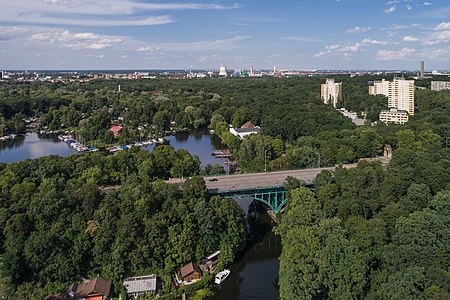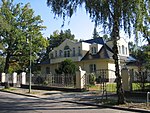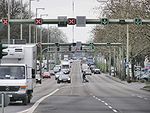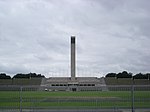Stößensee Bridge

The Stößenseebrücke is a steel truss bridge over the Stößensee and the Havelchaussee in the Berlin district of Spandau. The listed bridge from 1908/1909 is part of Heerstraße (federal highway 2/5) and connects the Spandau district of Wilhelmstadt with the Westend district of Charlottenburg-Wilmersdorf. The biggest technical and financial problem during the construction of the Heerstraße was bridging the Havel lowland, which includes the Stößensee, an old arm of the Havel. From several options, including an additional 250-meter-long bridge over the Scharfe Lanke, the planners opted for a route that could manage with two bridges - over the Havel and the Stößensee. With regard to the variants of the Stößensee bridge, the "small" solution with a dam embankment and a bridge around 100 meters long was chosen instead of a bridge over the entire lake. The bridge consists of a system of cantilever girders with connected towing girders and has a span of around 50 meters. It was designed by civil engineer Karl Bernhard.
Excerpt from the Wikipedia article Stößensee Bridge (License: CC BY-SA 3.0, Authors, Images).Stößensee Bridge
Heerstraße, Berlin Wilhelmstadt
Geographical coordinates (GPS) Address External links Nearby Places Show on map
Geographical coordinates (GPS)
| Latitude | Longitude |
|---|---|
| N 52.509166666667 ° | E 13.214722222222 ° |
Address
Stößenseebrücke
Heerstraße
13595 Berlin, Wilhelmstadt
Germany
Open on Google Maps










